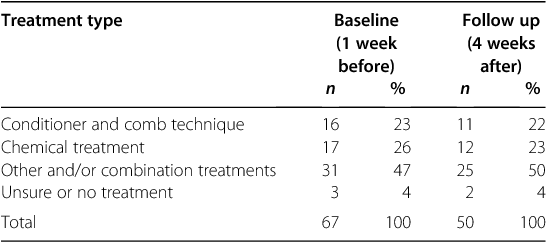Nitbusters: lessons from a school-based intervention study to reduce head lice in a disadvantaged community
Michelle Maxwell A D , Belinda Crawford B and Vanessa Rose CA NSW Office of Preventive Health, Locked Bag 7103, Liverpool BC, NSW 1871, Australia.
B NSW Public Health Officer Training Program, NSW Ministry of Health and School of Public Health and Community Medicine, University of New South Wales.
C Centre for Health Equity Training Research and Evaluation, UNSW Research Centre for Primary Health Care and Equity, Population Health, South Western Sydney and Sydney Local Health Districts, NSW Health and A Member of the Ingham Institute.
D Corresponding author. Email: michelle.maxwell@sswahs.nsw.gov.au
Health Promotion Journal of Australia 25(1) 67-68 https://doi.org/10.1071/HE13092
Submitted: 25 October 2013 Accepted: 26 January 2014 Published: 16 April 2014
Head lice is the most commonly reported complaint by parents and teachers to schools and up to one quarter of primary school aged children have head lice at any one time.1 New South Wales (NSW) Health, in collaboration with the NSW Department of Education and Communities and the NSW Federation of Parents and Citizens Associations, has previously implemented the ‘Nitbusters Head Lice in Schools Program’ across 28 schools in NSW, many located within disadvantaged communities. The program uses a whole-school approach in educating teachers, school support staff, children and parents about head lice and how to remove them. Importantly, Nitbusters promotes the use of the conditioner and comb treatment method, a cheap, accessible and effective method of head lice control.2 This program has not been formally evaluated, but similar initiatives undertaken in the United Kingdom have led to a decrease in the prevalence of head lice in disadvantaged areas.3
The aim of this study was to implement and evaluate the Nitbusters intervention within a public school located in a disadvantaged community in south-western Sydney, with a particular focus on influencing parental use of cheap and effective head lice treatment (i.e. the conditioner and comb method). We received ethics approval for the project from the South Western Sydney Local Health District Human Research Ethics Committee and the State Education Research Approval Process, NSW Department of Education and Communities.
The Nitbusters program involved: head lice screening and treatment of students from kindergarten to year 6 in a Nitbusters Day; dissemination of free head lice treatment packs to affected children, school and neighbourhood centres; dissemination of accurate information on effective head lice treatment to parents, teachers and the community; and involvement of parents, teachers and the community in the planning and implementation of the program (including employing parents to undertake surveys). Evaluation involved convenience surveys with parents or carers over 3 days on school premises of child head lice occurrence and treatment practices in the week prior and 4 weeks following the Nitbusters Day.
Almost one-third of the 67 parents surveyed in the week before the Nitbusters Day (n = 21) reported an occurrence of head lice in the current school year and 24% (n = 16) reported more than one occurrence. Consent for participation in the Nitbusters Day was gained from 90 students (22% of the 413 children registered with the school), 75 of whom participated in screening (18%). Head lice was detected and treated in 34 (45%) students. Table 1 shows parent reports of head lice treatment at baseline and 4 weeks following the intervention. Despite the focus on the conditioner and comb method throughout the Nitbusters intervention, parents at both time-points reported a preference for combination methods or other treatments (e.g. herbal products) in head lice control.

|
In short, the Nitbusters program was unsuccessful in changing parents’ reported preferences and practices for head lice treatment. The limitations of this program raise important issues in health-promotion practice. Even though we implemented best-practice community-engagement strategies,4 we were unable to maintain the same momentum and school and community faith in the project when the Nitbusters Day was delayed twice: first unavoidably for a school funeral and second for a holdup in ethical clearance resulting from our unfamiliarity with the process in a different sector. These factors likely affected awareness of the intervention, parental consent and student participation in the Nitbusters screening. Although delays such as these are an everyday part of the school and community environment, they can be corrosive when engaging with communities that are very disadvantaged and have low trust in public institutions.
References
[1] NSW Health. How serious is the head lice problem? Sydney: NSW Health; 2013. Available from: http://www.health.nsw.gov.au/environment/headlice/Pages/problem.aspx [Verified 23 August 2013][2] Willems S, Lapeere H, Haedens N, et al (2005) The importance of socio-economic status and individual characteristics on the prevalence of head lice in schoolchildren. Eur J Dermatol 15, 387–92.
[3] Ibarra J, Fry F, Wickenden C, et al (2007) Overcoming health inequalities by using the Bug Busting ‘wholeschool approach’ to eradicate head lice. J Clin Nurs 16, 1955–65.
| Overcoming health inequalities by using the Bug Busting ‘wholeschool approach’ to eradicate head lice.Crossref | GoogleScholarGoogle Scholar | 17880484PubMed |
[4] Minkler M. Community organizing and community building for health. 2nd edn. New Jersey: Rutgers University Press; 2005.

